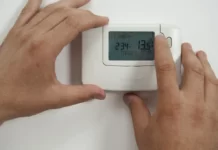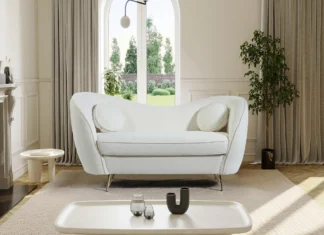We hear a great deal about carbon footprint lately and how it affects climate change. From activist Greta Thunberg to actor Leonardo DiCaprio, it’s all over the media, so it’s natural to feel inclined to take your part in all this and be the change you wish to see in the world.
But before you go all out in changing your life around drastically with the way you shop cook, clean, and dress, there’s one home upgrade you can do that will significantly lower your impact on the environment – adding insulation. This is a crucial aspect when it comes to the energy costs of a household.
The energy was a hot topic throughout the world last year, and the UK was no exception with the costs going through the roof, so I’m sure many would grab the chance of lowering the bills if they had it. Insulation does precisely this, and even with the architectural trends focusing on energy efficiency, many homes in the UK are still poorly insulated.
What’s Behind Poor Thermal Performance?
According to a study by the Resolution Foundation, leaky walls are to blame in most cases. With this in mind, avoid facing jawdropping costs in the upcoming years by investing in a beneficial and valuable improvement with the walls using the help of high-quality insulation boards instead of just brushing it off with temporary fixes like cheap loft insulations.
It may be one of the most expensive projects you’d undertake in terms of insulation upgrades, but it’s also one of the most advantageous in the long run. To make the most of it, you have to be sure what the walls of your home are like, and then you can choose the adequate solution in terms of boards.
Typically, homes built before the 1920s feature solid walls without cavities made of bricks, in which case plaster insulation boards are the perfect option. Whereas counterparts built afterward have cavities, and as such, are ideal for cavity wall insulation like that made of a fiber-free phenolic core with polypropylene fleece and low emissivity composite foil.
Types of Wall Insulation Boards
When looking for the optimal course of action, you’re probably going to wonder which option is the best for your needs, one that’s cost-effective, easy to apply, durable, lightweight, and a better insulator at the same time. This would lead you to some of the most popular choices you can find at retailers specialized in insulation:
PUR and PIR
The reason these two are mentioned together almost always has to do with the fact they are similar in chemical composition, as they’re both derived from polyurethane. In the case of PUR, the foam is produced by the reaction of a polyol with iso, while in the PIR insulation panels, it’s the iso that reacts among themselves forming isocyanurates.
The result in both options is lightweight closed-cell board products that are low in thermal conductivity and have high R-values of 6 and 7-7.2, respectively. Throughout the past decades, PUR has been the preferred choice mainly because of its water resistance properties, making it fit for flood-prone areas, and the ability to fill up even small spaces, including wall cavities. Not to mention its low price tag that also comes as appealing to many homeowners even today.
With PIR, the versatility, high durability, high thermal performance, low waste, low moisture, recyclability, lack of ozone-depleting CFCs, and flame and smoke-resistant properties make it better than the counterpart for a range of insulating projects. As there’s continuous advancement in the technologies used to create such products, there’s been an improvement that surpasses both PUR and PIR thanks to Kingspan’s QuadCore Technology which guarantees more fire resistance and better thermal performance.
EPS
Short for expanded polystyrene, it’s made of, you guessed it, polystyrene foam. The manufacturing process relies on heat or steam used to expand and fuse the beads of foam, so the end product is composed of about 2% of polystyrene, and the rest 98% is just air. Even though it’s not a closed-cell insulation board, it’s still a closed-cell structure.
Don’t let this fool you into thinking it’s poor when it comes to insulation, however, since the R-value is 4 and higher than that of mineral wool. For added thermal resistance, there are also products with a higher density that are slightly more expensive, and those with added fire retardants to make them low in spreading flames.
XPS
Short for extruded polystyrene, this too is made from polystyrene foam, but the difference from the EPS lies in the process: the use of liquifying polystyrene pellets, mixed with additives under pressure, and a blowing agent. This created a rigid cell foam making it like PUR and PIR insulation board and different from the EPS in terms of strength and density.
Although it’s more expensive than the EPS counterpart, it’s got a higher R-value of 5 with a thinner construction yet more quality properties and benefits, like its high moisture resistance which makes it suitable for a range of applications, even where there’s more humidity. Besides walls, it’s fit for roofs, and floors as well as foundations.
If you can’t make up your mind between these contenders, which come with their own pros and cons, one cost-effective decision that would also offer you customisation and benefits of joining the advantages of each option would be to go for a hybrid insulation system. For that, you’d have to check whether your chosen retailer and insulation contractor offer this kind of solution. And now, let’s move on to another important decisive factor.
The Benefits of Installing Insulation Boards
No matter if you choose to only boost the home’s thermal performance with an insulated plasterboard system on the walls, or also count on enhancements of the floors and roof beside a renewal of the windows and doors with draught sealing and double glazing, the truth is it brings about a load of benefits.
In addition to keeping your home cool in the warm period of the year, and warm in the cold, it can significantly improve your home’s living comfort. That’s a huge one for a start! Then, from the environmental point of view, it saves up on renewable sources as you won’t need extra heating and cooling, thus reducing greenhouse gas emissions.
In some cases, the insulation itself is recyclable so there’s another advantage here if you choose to further change up the thermal properties of your home in the future. Other ways this investment can prove to be beneficial are reducing the condensation, and as a result, cutting down the risk of nasty mold, as well as improving the home’s acoustic properties. This goes to show why such an upgrade is worthwhile in the long run for every homeowner!














